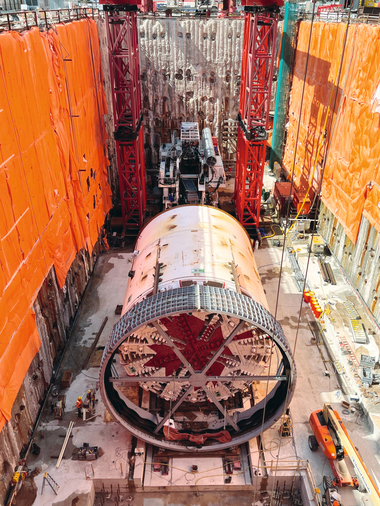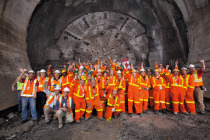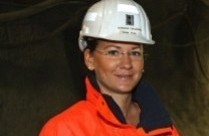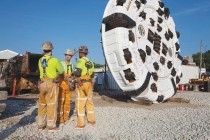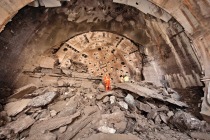Tunnelling for Canada’s Largest Outfall Completed
On March 3, 2022, a 7.95 m diameter Robbins Single Shield TBM completed boring at the Ashbridges Bay Outfall Tunnel in Toronto, Ontario. The tunnel boring machine launched in March 2021 from an 85 m deep, 16 m diameter shaft and began its bore in predominantly shale, with limestone, siltstone and sandstone.
 Robbins, construction company Southland, and other personnel celebrate the completion of tunnelling at the Ashbridges Bay Outfall Tunnel in early March 2022
Robbins, construction company Southland, and other personnel celebrate the completion of tunnelling at the Ashbridges Bay Outfall Tunnel in early March 2022
Credit/Quelle: Robbins
The completed wastewater outfall will connect to the 50 in-lake risers to enable efficient dispersion of treated effluent over a wide area of the lake, making it the largest outfall in the country. The project for the City of Toronto will improve the city’s shoreline and Lake Ontario’s water quality by replacing a 70-year-old existing outfall.
Daily Probe Drilling for Water
“This is a wonderful type of geology for our machines. During the entire excavation, a total of seven cutters were changed. The wear behavior is incredible, between 2 and 5 mm, and everyone is amazed by the cutter performance,” said Alfredo Garrido of Robbins Field Service. “Every 25 machine cycles, it was necessary to stop the excavation to probe drill hole in front of the cutterhead to check for possible water. This drilling was done basically every day, stopping the machine for a few hours, but it was very necessary,” said Garrido. The last kilometer of tunnel, bored below a series of 50 risers under Lake Ontario, was challenging but ultimately successful.
All-Remote Machine Acceptance
The project won accolades from the Tunnelling Association of Canada (TAC) in late 2021 for its all-remote machine acceptance enacted due to the Covid-19 pandemic. The machine acceptance, the first of its kind, enabled communication and confirmation between the machine’s assembly location in Mexico, suppliers in the U.S. and those involved in Canada.


